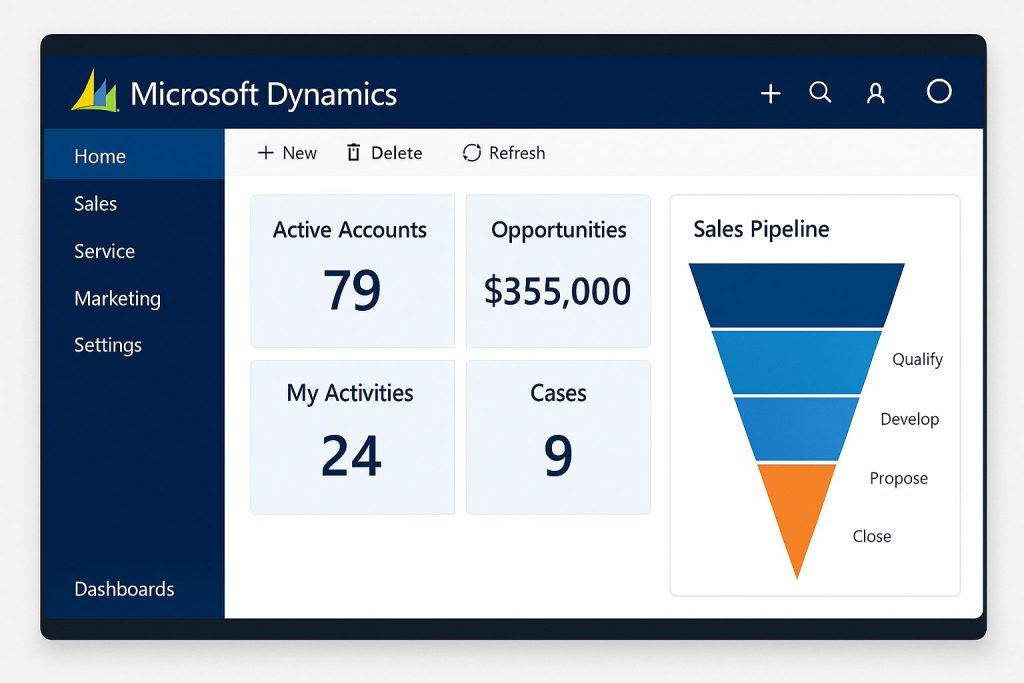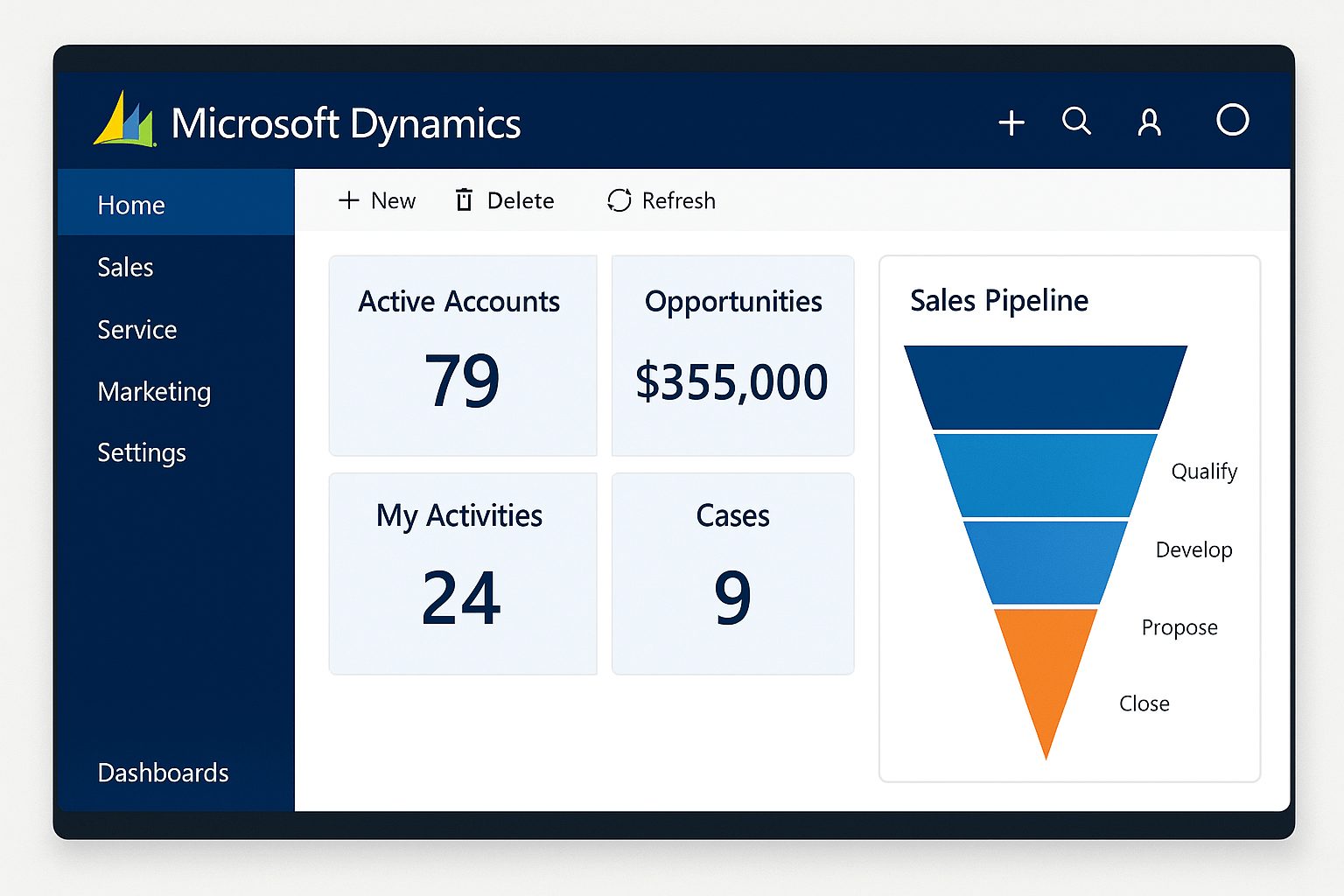
In today’s landscape, having the right business management software is crucial. Microsoft Dynamics has become a game-changer for organizations looking to streamline their processes, enhance productivity, and gain actionable insights. As a full-stack developer who works on responsive websites, implements CI/CD, database optimization, and also analyzes SEO strategies, I’ve seen how Microsoft Dynamics capabilities empower businesses to operate more effectively. In this guide, I’ll cover Microsoft Dynamics functionality, from finance to reporting, and share insights based on real-world implementation experiences.
Introduction to Microsoft Dynamics Capabilities Guide
Microsoft Dynamics is a comprehensive suite of enterprise resource planning (ERP) and customer relationship management (CRM) applications designed to help businesses manage their operations efficiently. Unlike many software suites that focus on isolated areas, Microsoft Dynamics provides an all-in-one solution covering accounting, operations, marketing, sales, and customer insights. This makes it ideal for both small businesses and large organizations scaling their workflows.
One of the key reasons companies opt for Microsoft Dynamics capabilities is its seamless integration with other Microsoft products. If your team already works with Office 365, Teams, or Power BI, incorporating Microsoft Dynamics feels natural. I’ve witnessed businesses transition smoothly simply because their employees are already familiar with the interface. A cloud-first approach ensures that businesses can operate without worrying about outdated infrastructure.
Another notable aspect is scalability. Whether you run a startup focusing on essential financials or a global firm managing multi-site operations, Microsoft Dynamics functionality scales with your needs. Cloud hosting ensures secure access on any device, making remote teams more efficient. This feature became critical during the recent shift to hybrid work models.
From a developer’s standpoint, the customization potential is huge. This openness allows companies to build workflows customized to their industry needs.
Key Microsoft Dynamics Functionality for Businesses
At its core, Microsoft Dynamics functionality covers diverse business areas like finance, sales, marketing, customer service, and supply chain management. Each module is interconnected, ensuring that departments no longer work in silos. This unified approach reduces data duplication and increases efficiency.
One aspect that consistently impresses my clients is the sales and CRM capabilities. Microsoft Dynamics allows teams to track leads, manage opportunities, and nurture customer relationships from a single dashboard. For businesses focused on client retention, the ability to automate follow-ups and create personalized communication strategies is invaluable.
Additionally, Microsoft Dynamics enables effective marketing integration. For example, a client of mine in retail used Dynamics to run digital campaigns, track leads, and analyze conversions. The reporting tools helped identify which campaigns drove meaningful ROI, resulting in budget reallocation toward more profitable channels.
From a technical perspective, businesses also benefit from role-based dashboards. By setting up custom user roles, Dynamics ensures employees see only what’s relevant to their responsibilities. This makes onboarding simpler and enhances operational security.
How Microsoft Dynamics Accounting Simplifies Finance
One of the most attractive Microsoft Dynamics capabilities is Microsoft Dynamics accounting, which helps simplify financial processes. Businesses can automate invoicing, expense tracking, payroll, and auditing all within the same platform. This reduces manual errors that often occur with outdated spreadsheets.
In my experience setting up Dynamics for a manufacturing company, one of the most useful features was real-time cash flow forecasting. By pulling data from sales, inventory, and procurement, the team gained a clear picture of financial health, improving budget allocation significantly. This level of integration is not possible with standalone accounting tools.
Microsoft Dynamics accounting also supports multi-currency and multi-language options, making it an excellent choice for global companies. I worked with an international client that had operations across Europe, and Dynamics simplified consolidation by handling currency conversions and tax regulations automatically.
The audit trail functionality is another critical element. Every update and transaction is logged, making compliance much easier during financial audits. This reduces risks and provides peace of mind for finance departments concerned about regulatory standards.
Streamlined Operations with Microsoft Dynamics Features
Operational efficiency is another area where Microsoft Dynamics functionality stands out. The platform provides supply chain management capabilities, warehouse automation, and procurement workflows. Businesses dealing with logistics or production find huge value in these features.
Microsoft Dynamics can also automate service management. Companies operating with field service teams benefit from optimized scheduling and routing, reducing downtime for customers and saving costs for the business. This feature is essential in sectors like utilities, telecoms, and home services.
From a backend perspective, the system’s API integrations ensure that third-party logistics (3PL) services can easily connect with Dynamics. I’ve built integrations with shipping providers where orders automatically generated labels and tracking codes, ultimately saving staff hours of repetitive work.
Boost Decision Making with Microsoft Dynamics Reports
Making data-driven decisions is easier thanks to Microsoft Dynamics reports. These reports provide clear insights into sales performance, financial health, marketing ROI, and operational bottlenecks. For business leaders, having these dashboards readily available supports faster and smarter decisions.
Microsoft Dynamics reports are customizable, allowing users to focus on metrics that truly matter. For instance, a retail business may prioritize stock turnover and promotional campaign ROI, while a B2B firm may track client acquisition cost and contract renewals.
The option for automated report scheduling is another practical benefit. Managers no longer need to manually request weekly performance updates—the system delivers them on time to their inboxes. This small feature creates significant productivity gains.
Essential Microsoft Dynamics Capabilities for Growth
When evaluating Microsoft Dynamics capabilities, scalability is one of the strongest selling points. Businesses in growth phases often need software that evolves with them, and Dynamics does exactly that. From startups to enterprises, the system adjusts to meet expanding requirements.
Implementing Microsoft Dynamics helps organizations to handle multi-currency processing, manage larger data sets, and integrate with multiple CRM tools. Without Dynamics, their growth would have been far more chaotic.
Another essential capability for growth-focused businesses is advanced analytics. Dynamics gives visibility into trends that can guide expansion strategies. For example, sales data can highlight emerging market opportunities before competitors act on them. This data-driven approach is often the difference between rapid growth and stagnation.
Additionally, Dynamics leverages AI and machine learning features. Predictive insights, customer churn forecasting, and pipeline analysis create stronger growth strategies. Implementing these tools means companies can act proactively instead of reacting to issues too late.
Comparing Microsoft Dynamics Functionality Across Plans
Microsoft Dynamics offers different pricing tiers and plans, ensuring businesses of every size can access the right level of functionality. The main plans include Dynamics 365 Finance, Sales, Marketing, Supply Chain Management, and Customer Service. Each plan offers a distinct set of tools tailored to specific areas of business.
When comparing Microsoft Dynamics functionality across plans, it’s important to match your business needs to the right modules. For example, a retail business may prioritize supply chain and customer insights, while a consulting firm may focus more on sales and project management. From my experience, businesses often start with one module and gradually expand as their requirements grow.
Smaller companies frequently begin with Microsoft Dynamics Business Central, which combines core financials and operations. This plan is cost-effective and provides all the essential tools needed to get started. Larger enterprises often transition to the full Dynamics 365 suite, which provides modular scalability.
A tip I often share with clients is to carefully examine licensing options. Some organizations over-purchase modules they rarely use. Instead, a phased implementation often ensures maximum ROI without unnecessary expenses.
Final Thoughts on Microsoft Dynamics Capabilities
Microsoft Dynamics capabilities go far beyond traditional ERP and CRM systems. Its unique flexibility, scalability, and wide-ranging functionality make it one of the most powerful business tools available. Whether you need Microsoft Dynamics accounting, advanced reporting, or end-to-end operational management, the system is designed to create real business value.
From personal experience, I’ve seen clients move from fragmented workflows to highly integrated environments that boosted both productivity and profitability. The ability to unify various departments and keep everything connected in real-time is a clear competitive advantage.
Businesses benefit from customizable Microsoft Dynamics functionality, ensuring they pay only for what they use while maintaining room to scale. This modular approach makes it suitable for both startups and large enterprises.
In conclusion, Microsoft Dynamics is more than just a software suite—it’s a strategic tool that transforms how companies operate. With capabilities ranging from accounting and reports to full-scale operations management, it ensures businesses can grow confidently while making data-driven decisions. By adopting Microsoft Dynamics, companies prepare themselves for long-term success in an increasingly competitive landscape.
Q&A – Microsoft Dynamics Capabilities
Q: What are the core Microsoft Dynamics capabilities for small businesses?
A: For small businesses, Microsoft Dynamics Business Central provides accounting, inventory, and customer relationship management, all in one affordable package.
Q: How does Microsoft Dynamics accounting help with compliance?
A: It provides audit trails, automated tax calculations, and real-time financial reporting to simplify compliance with regional regulations.
Q: Can Microsoft Dynamics reports be integrated with other tools?
A: Yes. Dynamics integrates seamlessly with Power BI, enabling deeper data visualization and insights.
Q: Is Microsoft Dynamics functionality customizable?
A: Absolutely. Developers can leverage APIs, connectors, and built-in workflow builders to customize processes for industry-specific needs.






